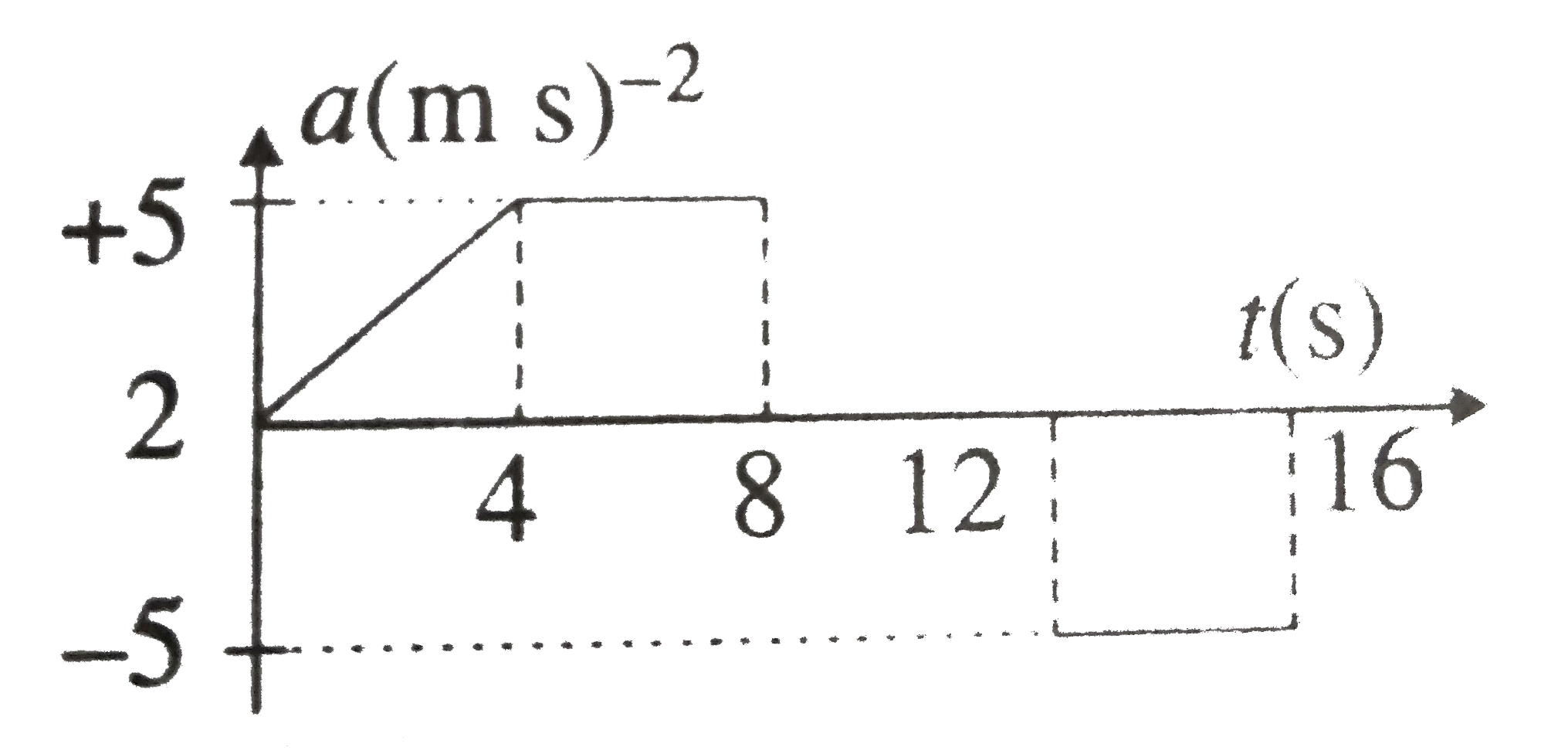(A):The displacement of a particle starting from rest is directly proportional to the cube of the time of travel then the particle is moving with non uniform acceleration.
(R ):Acceleration
The correct Answer is:A
To solve the problem, we need to analyze the relationship between displacement, time, and acceleration of a particle starting from rest.
1. Understanding the Problem Statement:
The displacement s of a particle starting from rest is directly proportional to the cube of the time t. This can be mathematically expressed as:
s∝t3
2. Expressing the Proportionality:
To remove the proportionality, we introduce a constant c:
s=ct3
3. Finding Velocity:
The velocity v of the particle is the first derivative of displacement with respect to time:
v=dsdt=ddt(ct3)=3ct2
4. Finding Acceleration:
The acceleration a of the particle is the second derivative of displacement with respect to time, or the first derivative of velocity:
a=dvdt=ddt(3ct2)=6ct
5. Analyzing the Acceleration:
From the expression a=6ct, we can see that the acceleration is directly proportional to time t. This indicates that the acceleration is not constant; rather, it increases linearly with time.
6. Conclusion:
Since the acceleration is a function of time (specifically, it varies linearly with time), we conclude that the particle is moving with non-uniform acceleration.
Final Statement:
Thus, the statement (A) is true, and the reasoning (R) is also correct. The particle is indeed moving with non-uniform acceleration.
---
The displacement s of a particle starting from rest is directly proportional to the cube of the time t. This can be mathematically expressed as:
s∝t3
To remove the proportionality, we introduce a constant c:
s=ct3
The velocity v of the particle is the first derivative of displacement with respect to time:
v=dsdt=ddt(ct3)=3ct2
The acceleration a of the particle is the second derivative of displacement with respect to time, or the first derivative of velocity:
a=dvdt=ddt(3ct2)=6ct
From the expression a=6ct, we can see that the acceleration is directly proportional to time t. This indicates that the acceleration is not constant; rather, it increases linearly with time.
Since the acceleration is a function of time (specifically, it varies linearly with time), we conclude that the particle is moving with non-uniform acceleration.
Thus, the statement (A) is true, and the reasoning (R) is also correct. The particle is indeed moving with non-uniform acceleration.
Similar Questions
The displacement of a particle starts from rest is proportional to the square of time, then the particle travels with
View SolutionThe displacement of a body is given to be proportional to the cube of time elapsed. The magnitude of the acceleration of the body is
View SolutionThe graph between displacement and time for a particle moving with uniform acceleration is a
View SolutionThe distance covered by a moving body is directly proportional to the square to the time. The acceleration of the body is
View SolutionThe position of a particle moving on a straight line is proportional to the cube of the time elapsed. How does the acceleration of the particle depend on time elapsed?
View SolutionA body starts from rest and then moves with uniform acceleration. Then.
View SolutionA particle start from rest, with uniform acceleration at time t, choose the correct option
View SolutionA particle starting from rest attains a velocity of 50ms−1 in 5 s. The acceleration of the particle is
View SolutionThe velocity of a particle moving in a straight line is directly proportional to 3/4th power of time elapsed. How does its displacement and acceleration depend on time?
View SolutionThe acceleration of a particle starting from rest and travelling along a straight line is shown in figure. The maximum speed of the particle is

View Solution
